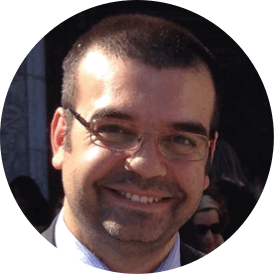The Third Included
- Michael Panao
- 3 de dez. de 2016
- 2 min de leitura

One time in an European Project, I was using the transdisciplinary approach to explore a new way of resolving contradictions. These always come when there is a conflict of interests. However, in transdisciplinarity, in order to get to the unity of knowledge, we need to overcome those contradictions. This is where the logic of the third included comes into picture and revolutionizes our way of thinking.
The argument is simple. Contradictions appear when we only look at things from the perspective of a single level of understanding reality. Like Gratuity and Profit at the level of materiality seem contradictory. But if we introduce relational goods at the sociality level, there’s no contradiction. For example, a lot of writers develop Lead Magnets given for free, like a book, course or something else, in exchange for our contact. The likelihood of begin enjoying this writer’s work increases the probability of buying his books because you know it’s a good investment. The Lead Magnet is a relational good because it establishes a closer relation between reader and writer. Relational goods are a third included resolving the contradiction of gratuity and profit, when we only look through the eyes of materiality.
And when you see no way of resolving a contradiction, does it means you cannot apply the transdisciplinary method? No.
It just means you haven’t found the third included yet. In a few cases it takes time, or it can take forever, but it doesn’t mean it’s not there to be found.
My colleagues in the European Project saw in this “third included” a tool with a lot of potential. But then I thought there must be more research on this topic, in fact, I found the Transdisciplinary Journal of Engineering & Science, which is open access and where we can find more state-of-art research on the general and applied topic of Transdisciplinarity.
I just started to download some of these papers when I came across a book from a conference on Transdisciplinarity (available on the ResearchGate platform) which contained an article by Basarab Nicolescu. At a certain point while reading the article about the “third included” as the “hidden third”, I found out the European Journal of Science and Theology.
I started out with transdisciplinarity without thinking about science and religion, but apparently, the whole point of recovering the sacred dimension of human nature through transdisciplinarity is - I have to say - unexpected. This wasn’t - at all - what I had in mind in the first place, but it makes perfect sense.
The human person is curious, creative, inquisitive, relentless, resilient, and dreams of the infinite. These are characteristics of being sacred, spiritual. Denying this dimension of who we are has led to nowhere. There is no contradiction between science and religion, and the third included, the hidden third is… us.
An atheist is only a person in the path of resistance, therefore, regardless of his beliefs in unbeliefs, he’s also in the path of truth. Even if it is a longer path.
I will go deeper into this in the future, but first it is important to experience how transdisciplinarity can be applied to renew universities.







Comentários